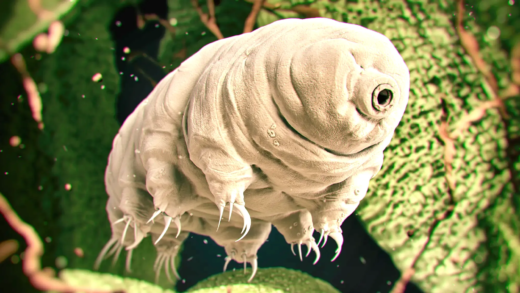Animal classification is vital for understanding biodiversity and conservation. Carl Linnaeus laid the groundwork with his taxonomy system, which still influences modern science. Classification methods have evolved, incorporating DNA analysis, allowing for more accurate groupings of species. Today, Linnaeus’s system is relevant, providing a structured framework that supports ongoing research. Unique facts about classifications reveal the interconnectedness of species, while systematic methods ensure consistency and accuracy in determining classifications.
What is Animal Classification?
Animal classification is the systematic categorization of animals into groups based on shared characteristics. This process, known as taxonomy, helps scientists and researchers organize the vast diversity of animal life on Earth. By grouping animals, we can better understand their relationships, evolution, and ecology. Each classification provides a framework that aids in the study and conservation of animal species.
Why is Animal Classification Important?
Animal classification holds significant importance in various fields. Firstly, it facilitates communication among scientists, ensuring they refer to the same species consistently. Secondly, it aids in biodiversity conservation by identifying endangered species and their habitats. Additionally, classification assists in medical research, as many drugs are derived from animal compounds. In essence, animal classification is crucial for ecological studies, conservation efforts, and advancements in medicine.
Who was Carl Linnaeus?
Carl Linnaeus, a Swedish botanist, is often referred to as the father of modern taxonomy. Born in 1707, Linnaeus introduced a hierarchical system for classifying living organisms, laying the groundwork for the scientific naming of species. His innovative approach revolutionized biology and created a universal language for scientists to describe and categorize the natural world.
Contributions of Carl Linnaeus to Taxonomy
Linnaeus’s contributions to taxonomy are profound. He developed the binomial nomenclature system, which assigns each species a two-part Latin name consisting of its genus and species. For example, the domestic cat is classified as Felis catus. This system standardized naming conventions, making it easier for scientists to identify and communicate about species. Furthermore, Linnaeus established a structured hierarchy of classification, including categories such as kingdom, class, order, family, genus, and species. His work not only advanced scientific understanding but also influenced future generations of biologists.
Structure of the Linnaean Taxonomy System
The Linnaean taxonomy system is a structured approach to classifying animals based on shared characteristics. This system consists of several hierarchical levels, each serving a distinct purpose. The main levels of classification include:
- Kingdom: The broadest category, encompassing all life forms. Animals belong to the Kingdom Animalia.
- Phylum: This level groups organisms based on fundamental body plans. For example, Chordata includes all animals with a backbone.
- Class: Within each phylum, classes further refine groupings. Mammalia, for instance, includes all mammals.
- Order: Classes are divided into orders, such as Carnivora, which comprises carnivorous mammals like lions and tigers.
- Family: Orders are broken down into families. For example, Felidae is the family that includes all cats.
- Genus: Each family consists of genera. Panthera is a genus that includes big cats like lions and tigers.
- Species: The most specific level, identifying individual organisms. For example, the species name for the domestic cat is Felis catus.
This structured hierarchy allows for a clear and organized understanding of animal classification, facilitating communication and research in the biological sciences.
How Does the Linnaean System Classify Animals?
The Linnaean system classifies animals through a systematic process based on observable characteristics and genetic information. The classification process involves the following steps:
- Observation: Scientists observe specific traits of the animal, such as physical features, behavior, and habitat.
- Comparison: These traits are compared with those of other known species to determine similarities and differences.
- Grouping: Animals with shared characteristics are grouped together, forming the basis for classification at various taxonomic levels.
- Naming: Once classified, each species is assigned a unique binomial name following the rules of binomial nomenclature.
This methodical approach not only helps in identifying species but also reveals evolutionary relationships among different animal groups.
Main Categories in the Taxonomy Hierarchy
The taxonomy hierarchy consists of several primary categories that organize the diversity of animal life. These categories include:
- Kingdom: The highest rank, grouping all living organisms.
- Phylum: Categorizes based on major body structures.
- Class: Divides phyla into more specific groups.
- Order: Further breaks down classes into related families.
- Family: Groups related genera together.
- Genus: Contains closely related species.
- Species: The most specific classification, identifying individual organisms.
Understanding these categories is essential for studying animal classification, as they provide a framework for organizing and relating different species. Each level of the taxonomy hierarchy offers insights into the evolutionary history and ecological roles of animals.
Evolution of Animal Classification Since Linnaeus
Animal classification has evolved significantly since Carl Linnaeus introduced his system in the 18th century. Initially, taxonomy relied heavily on observable traits, such as morphology and behavior. However, as science progressed, new methods emerged, enhancing our understanding of animal relationships. Today, classification incorporates genetic information, which has revolutionized how we view the evolutionary connections among species. For instance, molecular phylogenetics uses DNA sequences to establish relationships that traditional methods could not. This integration of genetics has led to the reclassification of numerous species, reflecting their true evolutionary paths.
Why Do We Still Use Linnaeus’s System Today?
Despite the advancements in classification techniques, Linnaeus’s system remains relevant. The simplicity and structure of his hierarchical taxonomy provide a solid foundation for organizing biological information. Scientists continue to use the binomial nomenclature system for naming species, which ensures consistency across different languages and regions. Additionally, Linnaeus’s categories serve as a baseline for modern taxonomy, allowing researchers to build upon his work while incorporating new findings from genetic research. This enduring legacy highlights the importance of Linnaeus’s contributions to our understanding of biodiversity.
Interesting Facts About Specific Animal Classifications
Animal classifications often reveal fascinating insights about the natural world. For instance, did you know that all domestic cats belong to the family Felidae, which also includes lions and tigers? This classification highlights their shared ancestry despite their differing lifestyles. Another interesting fact is that the blue whale, the largest animal on Earth, is classified within the order Cetacea, which also includes dolphins and porpoises. This grouping emphasizes the evolutionary adaptations that allow these animals to thrive in aquatic environments. Such unique classifications not only pique curiosity but also enhance our understanding of animal behavior and ecology.
How Do Scientists Determine an Animal’s Classification?
Determining an animal’s classification involves several systematic steps. Scientists start with careful observation of physical traits, behaviors, and habitats. Following this, they compare these characteristics with those of known species to identify similarities and differences. Grouping is the next step, where animals with shared traits are classified together at various taxonomic levels. Finally, each species is assigned a unique binomial name, adhering to Linnaeus’s rules. This rigorous approach ensures that classifications are based on scientific evidence, facilitating research and communication within the scientific community.
Role of DNA in Modern Animal Classification
DNA analysis plays a crucial role in modern animal classification, providing insights that were previously unattainable. Genetic sequencing allows scientists to examine the molecular makeup of organisms, revealing their evolutionary relationships. For instance, comparing DNA sequences can confirm or challenge traditional classifications based on morphology alone. This molecular approach has led to significant changes in how certain species are grouped, often resulting in unexpected revelations about their ancestry. The integration of DNA technology into classification not only enhances accuracy but also deepens our understanding of the complex web of life on Earth.





Comments are closed.